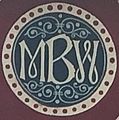History of local government in London facts for kids
The history of local government in London, England tells us how the city has been managed and governed over many years. Local government is all about making decisions for a specific area, like a city or town. It handles things like roads, parks, schools, and public services. London's local government has changed a lot to keep up with the city's growth and needs.
Contents
How London's Government Changed Over Time
Early Days: A Confusing System (Before 1855)
Before 1855, London's government was quite messy. The ancient City of London was a small, self-governing area. It didn't change much, even as the rest of London grew huge around it. The wider London area was managed by small local areas called parishes and hundreds. These were part of different counties like Middlesex, Essex, Kent, Surrey, and Hertfordshire.
There wasn't much teamwork between these different areas. Some special places, like the Liberty of Westminster, even had their own rules. People at the time said the system was "in chaos" because it was so unorganized.
The Metropolitan Board of Works (1855-1889)
As London grew, it needed better roads, sewers, and other important things. So, in 1855, the Metropolis Management Act 1855 created the Metropolitan Board of Works. This board was set up to build and manage the big projects needed for what we now call Inner London. Its members were chosen by the local parishes and boards. It was a big step towards a more organized way of running the city.
London Gets a County Council (1889-1900)
In 1889, a new law called the Local Government Act 1888 made an even bigger change. It created the County of London. This new area covered the same place that the Metropolitan Board of Works had looked after. A new council, called the London County Council, was formed to share power with the existing local boards.
However, the old City of London still remained separate. Also, some towns like Croydon and West Ham (and later East Ham) became "county boroughs." This meant they were outside the new County of London and also outside the control of the county councils for Surrey and Essex.
A few years later, in 1894, the Local Government Act 1894 divided the rest of England into urban districts and rural districts. Around London, these smaller districts eventually became municipal boroughs and urban districts. There were attempts to merge the City of London with the County of London, but they didn't succeed.
Then, in 1900, the London Government Act 1899 created Metropolitan boroughs within the County of London. These new boroughs shared responsibilities with the London County Council. All the old, confusing local groups like vestries and liberties were finally removed.
Greater London is Born (1965-1986)
London kept growing, and the old system needed another update. In 1965, the London Government Act 1963 made a huge change. It created an even bigger area called Greater London. This new area replaced the County of London, the Middlesex County Council, and all the smaller local districts within about 12 miles of the city center.
A new main council, the Greater London Council, was formed. It focused on big, strategic plans for the whole area. It shared power with 32 new local councils called London boroughs. The City of London still kept its unique status.
Changes and a New Authority (1986-Present)
In 1986, the Local Government Act 1985 abolished the Greater London Council. This meant the 32 London boroughs became more independent, handling most local services themselves. Some bigger tasks were managed by special joint groups. A separate group, the Inner London Education Authority, continued to look after schools in inner London for a while, but it was also later removed.
Then, in 2000, the Greater London Authority Act 1999 brought back a city-wide government. It created the Greater London Authority (GLA). The GLA has two main parts: the Mayor of London and the London Assembly. The Mayor is in charge of big plans for London, like transport and policing. The Assembly checks what the Mayor is doing. They share power with the London boroughs and the City of London, working together to manage the huge city that London has become.
Images for kids
-
County Hall, former home of the London County Council and Greater London Council
-
City Hall, current home of the Greater London Authority
-
Logo of the Metropolitan Board of Works
-
Greater London Authority logo (2000-2001)















